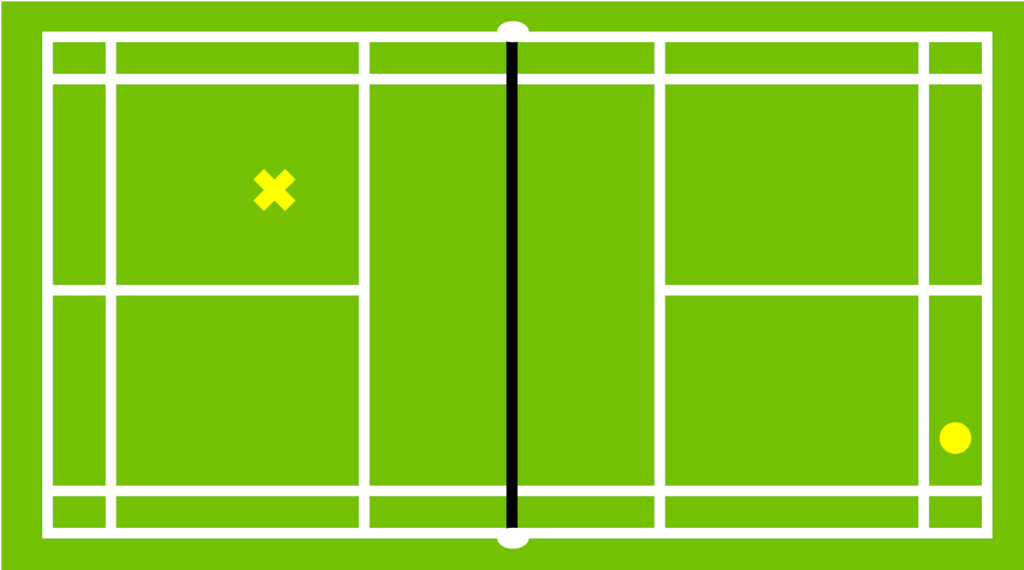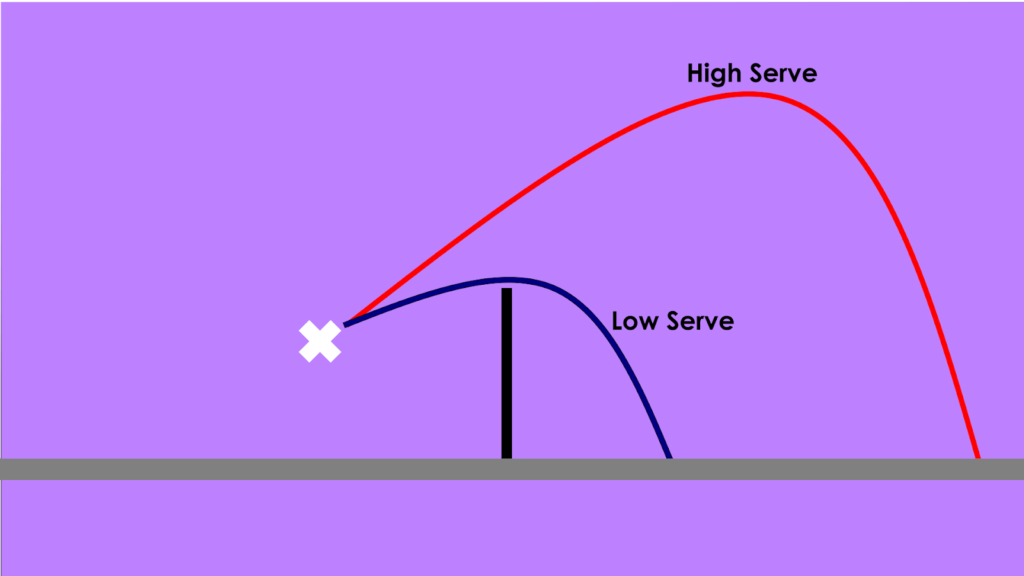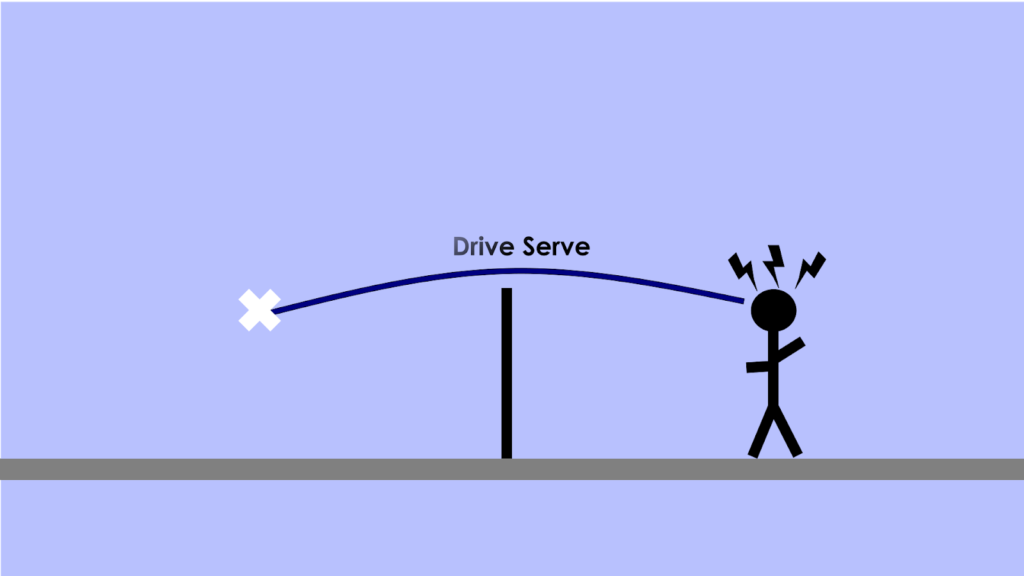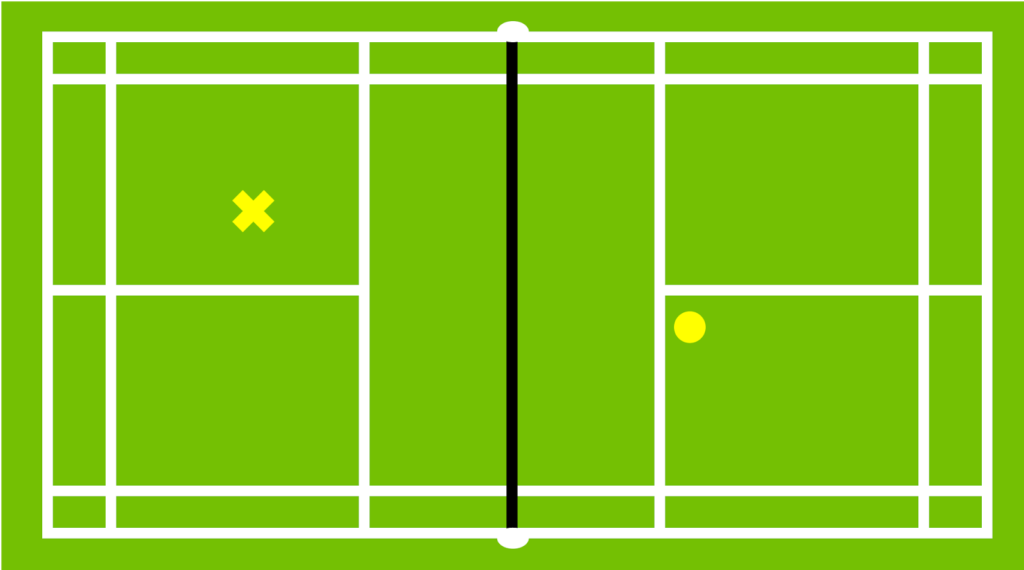In badminton, the rally starts with a serve!
It is without a doubt, the most important shot as it sets the tone for shots to follow. All badminton players will agree to the fact that a good service gives an instant boost in confidence that makes you the hot favorite for that point. Similarly, bad service is a mistake that your opponent yearns to keep you on backfoot.
Today, we will cover the whole nine yards of badminton serve along with their types to put you on track to become the maestro in this game.
Read Also:
Let’s get down to business!
4 Types of Serves in Badminton
The first shot of the badminton rally is meant to serve as a surprise to your opponent. Abiding by a single form of service can take away the element of unpredictability for your opponent. You don’t want that to happen, right?
That is why we brought you four different types of serves in badminton to keep the opponent busy in guessing your next move while you score the point.
1. High Serve
High serve is a powerful strike that is meant to go over the head of the opponent at the rare part of the court. In most cases, the high serve is executed with a forehand grip as it requires great power to hit the shuttlecock in a way that it covers a substantial distance in both dimensions i.e. horizontal and vertical.
However, there is no margin for error when you are standing inside the court. The foot placement and body position for high serve can be revealing too much about your shot, making the opponent aware of your move. Furthermore, the high serve can be a lot of risks if you are a beginner. A little miscalculation and you will end up hitting the shuttlecock over the line.

As the figure shows, an ideal hand serve played from position X will sail over the head of the opponent, falling vertically at the circle.
2. Flick Serve
Flick serve is a job executed by the backhand grip. It is considered as one of the trickiest serve to master and most common amongst the professionals of the game. The reason behind opting for such a complicated serve is the advantages it has to offer.
First and foremost, a flick serve is performed from such a position that it almost makes it impossible for the opponent to guess the shot beforehand. In simple words, from the same position, you can serve a strong shot following a higher trajectory or just play it gently to just make it over the net and fall in front of your opponent. Amazing, Isn’t it?

Getting command over backhand grip and then using it to serve will need a lot of practice. However, the prospect of keeping your opponent all over the map until you strike is a good enough motivation.
3. Drive Serve
Now, this is where things get interesting. For some, it is a cheap way to steal a point, while others think of it as worth a shot. Drive Serve is an aggressive approach where you serve underarm using a forehand grip to play straight at your opponent. Drive serve is supposed to follow a flat trajectory over the net at high speed to take your opponent by surprise.
The Drive Serve is a gamble!
If your opponent lacks agility and good reflexes, then congratulations! They are most likely to mishit or find themselves dumbfounded. But if they read the shot in time, they will surely reply with a powerful hit that might lose you a point.

This is the very reason why this shot is uncommon amongst pro players since they are trained to use it against you. However, if you are a beginner trying to make a name for yourself, the drive serve can be a game-changer for you!
4. Low Serve
Low serve is a simple yet very effective serve in badminton. It is a go-to option when the opponent is standing away from the front line of their service court. A low serve is a gentle push to shuttlecock that is meant to fall just over the front of the front line on the opponent’s service court. Make sure not to give extra flight path to shot else the opponent will get the opportunity to smash it back at you.
A perfectly executed low service can provide you multiple opportunities to score. If the opponent is able to defend the service, the following shot will be a high trajectory shot near the net which opens all doors for you to smash a net kill.

A player standing at X should be able to land the shuttlecock at the circle following a low trajectory to call it a low serve.
Forehand Serve VS Backhand Serve
All the above-mentioned types of badminton serves are either played from forehand or backhand.
Forehand grip gives you access to hit at any region of the service court with enough power. However, one must take care of the fine line of precision to avoid overhitting their shuttle.
On the other hand, backhand service sustains the unpredictability of the shot by giving away no hints of what’s coming their way. This grip unlocks the possibility of playing and high and low serve from a single action. The majority of the professional badminton players abide with backhand serves.
Here is why both are different:
| Forehand Serve | Backhand Serve |
|---|---|
| 1. Played using a forehand grip 2. Played from a few feet away from the frontline of the service court. 3. Place your non-racket leg in front while the racket leg behind. 4. Drop the shuttle to play a powerful shot with a complete motion. | 1. Played using a backhand grip 2. Played from closer to the frontline of the service court. 3. Place your racket leg in front while non-racket leg behind. 4. Smack the shuttle with the face of the racket to brush the net and topple on the other side of it. |
Wrapping Up
That’s all you need to learn about the Types of Serves In Badminton. Apart from switching between these four basic serves, you can also try mixing up the angles of the racket face and the length of the grip while serving to keep your opponent in deep uncertainty about your plans.
Leave a comment if you have any queries about the game and we will get back to you asap!



